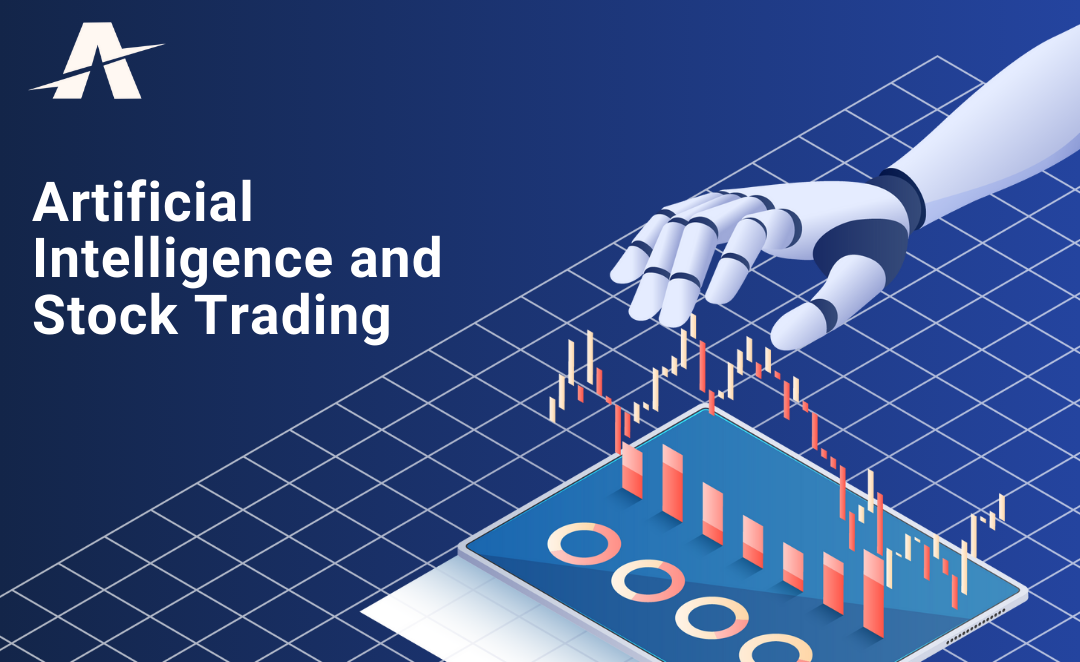20 Top Reasons For Deciding On Ai Trading Software
20 Top Reasons For Deciding On Ai Trading Software
Blog Article
Top 10 Tips To Choose The Right Ai Platform Trading Stocks From Penny To copyright
Whether you are trading in penny stocks or copyright picking the right AI platform to use is crucial to your success. Here are ten essential guidelines to help you choose the best one:
1. Determine Your Trading Objectives
Tips. Identify the things you're interested about - penny shares, cryptos or both. Also, define if your objective is to invest over the long-term, or perform short-term trades or automate trading by using algorithms.
Why platforms excel in specific areas. The clarity of your goals will help you choose the right platform for your needs.
2. How do you assess predictive accuracy?
Find out the accuracy of the platform in predicting future events.
How to determine reliability: Check out published backtests and user feedback.
3. Real-Time Data Integration
Tips: Make sure that your platform can integrate with real-time data feeds for markets. This is crucial for fast moving assets like penny stocks and copyright.
Delay in data can cause missed opportunities or poor execution of trades.
4. Assess the possibility of customizing
TIP: Look for platforms that offer custom indicators, parameters and strategies that are suited to your style of trading.
Examples: Platforms like QuantConnect or Alpaca permit extensive customization by tech-savvy users.
5. Accent on Features for Automation
TIP: Look for AI platforms with strong automation capabilities, including stop-loss, take profit, and trailing stop features.
Automation can help you save time, and also help you perform trades more efficiently especially in volatile markets.
6. Assessing Sentiment Analyzing Tools
Tips: Choose platforms with AI-driven sentiment analysis, particularly for penny and copyright stocks, which are often influenced by social media and news.
What is the reason? Market perception may be a critical driver of short term price movements.
7. Prioritize the Ease of Use
Tips: Make sure the platform you choose to use has an easy and clear interface.
Why: A steep learning curve can delay your ability to start trading effectively.
8. Examine for Regulatory Compliance
TIP: Make sure that the platform is compliant with trading rules in your area.
copyright: Check the features that are compatible with KYC/AML.
If you are investing in penny stocks, be sure you follow you follow the SEC or other similar regulations are followed.
9. Cost Analysis
Tip: Understand the platform's pricing--subscription fees, commissions, or hidden costs.
Why: A high-cost platform could reduce profits, especially for smaller trades in copyright and penny stocks.
10. Test via Demo Accounts
Use demo accounts to test the platform without the risk of losing your money.
The reason: A test run will reveal if the platform will meet your expectations in terms of capabilities and performance.
Bonus: Be sure to review the Community Support and Customer Support.
TIP: Search for platforms that have strong support and active user communities.
Why? The support you receive from trusted advisors and peer-group members can help resolve issues and improve your strategies.
By carefully evaluating platforms based on these factors and criteria, you can discover the one that is most closely with your style of trading, whether you're trading penny stocks, copyright, or both. See the most popular ai trading app hints for more examples including stock analysis app, incite ai, coincheckup, artificial intelligence stocks, ai trading bot, best ai for stock trading, stocks ai, best stock analysis website, best ai copyright, ai trader and more. 
Top 10 Tips For Ai Stock Pickers And Investors To Pay Attention To Risk Metrics
A close eye on risk metrics can ensure that your AI-powered stock picker, investment strategies and predictions are adjusted and able to withstand market fluctuations. Understanding and managing risk will help protect your portfolio from large losses and lets you make informed, data-driven choices. Here are 10 top tips for integrating risk metrics into AI investment and stock-picking strategies:
1. Understanding the Key Risk Metrics Sharpe Ratios, Max Drawdown, and Volatility
Tips Focus on the most important risk indicators, like the maximum drawdown as well as volatility, to evaluate the AI model's risk-adjusted performances.
Why:
Sharpe ratio measures the return of a portfolio in relation to risk. A higher Sharpe ratio indicates better risk-adjusted performance.
Maximum drawdown lets you evaluate the possibility of big losses by assessing the peak to trough loss.
Volatility measures the market's volatility and fluctuation in price. The high volatility of the market is linked to greater risk, whereas low volatility is associated with stability.
2. Implement Risk-Adjusted Return Metrics
TIP: Use risk adjusted return metrics like Sortino ratios (which concentrate on downside risks) and Calmars ratios (which evaluate returns against the maximum drawdowns) to determine the real performance of your AI stock picker.
What are they? They are based on the efficiency of your AI model in relation to the degree and type of risk it is subject to. This lets you determine whether the returns are worth the risk.
3. Monitor Portfolio Diversification to Reduce Concentration Risk
Utilize AI management and optimization to ensure that your portfolio is properly diversified across the different types of assets.
The reason: Diversification reduces the risk of concentration. Concentration can occur when a portfolio becomes overly dependent on a single stock or sector, or market. AI is a tool for identifying correlations between different assets, and altering the allocations to minimize risk.
4. Measure beta using the tracker to gauge the market's sensitivity
Tip: Use the beta coefficient to determine the sensitivity to market movement of your stock or portfolio.
Why is that a portfolio with a Beta greater than 1 is volatile, while a Beta less than 1 indicates a lower volatility. Knowing beta lets you adjust your risk exposure according to the market's movements and the risk tolerance of the investor.
5. Set Stop-Loss Limits and Set Take-Profit based on risk tolerance
Tips: Set stop-loss and take-profit levels using AI predictions and risk models to control losses and lock in profits.
What are the reasons: Stop loss levels exist to protect against excessive losses. Take profit levels are there to secure gains. AI helps determine the best levels based on past price movements and the volatility. It maintains a equilibrium between the risk of reward.
6. Monte Carlo simulations can be used to evaluate the level of risk in various scenarios.
Tip: Use Monte Carlo simulations in order to simulate a range of possible portfolio outcomes in various market conditions.
Why: Monte Carlo simulations provide a probabilistic view of your portfolio's future performance and help you understand the risk of various scenarios (e.g. massive losses, extreme volatility) and to better prepare for these scenarios.
7. Use correlation to determine the systemic and nonsystematic risk
Tips. Use AI to study the relationship between assets within your portfolio and market indices. It can help you identify systematic risks and unsystematic ones.
What is the reason? Unsystematic risk is unique to an asset. However, systemic risk impacts the entire market (e.g. economic downturns). AI can reduce unsystematic and other risks by suggesting less-correlated assets.
8. Monitor the value at risk (VaR) to be able to estimate the risk of loss
Tip: Use Value at Risk (VaR) models that are based on confidence levels, to calculate the potential loss for a portfolio within the timeframe.
Why? VaR gives you a clear picture of what could happen with regards to losses, which allows you to evaluate the risks in your portfolio in normal market conditions. AI will adjust VaR according to changing market conditions.
9. Create risk limits that are dynamic and are based on the market conditions
Tips. Make use of AI to modify the risk limit dynamically based on the current market volatility and economic conditions.
The reason: Dynamic risks the exposure of your portfolio to risky situations in the event of high volatility or uncertain. AI analyzes real-time data to adjust your portfolio and maintain your risk tolerance to acceptable levels.
10. Use Machine Learning to Predict Tail Events and Risk Factors
Tips: Make use of historical data, sentiment analysis, as well as machine-learning algorithms to identify extreme or tail risk (e.g. stock market crashes, black-swan events).
What is the reason? AI can help identify risks that traditional models might not be able to recognize. They can also forecast and help you prepare for rare but extremely market conditions. By analyzing tail-risks, investors can prepare for possible catastrophic losses.
Bonus: Reevaluate your Risk Metrics as Market Conditions Change
Tips: Always update your models and risk indicators to reflect changes in economic, geopolitical or financial risks.
Why: Markets conditions can change rapidly, and using old risk models could result in an inaccurate assessment of risk. Regular updates let the AI models to adjust to market conditions that change, and reflect new risks.
Conclusion
By carefully monitoring risk metrics and incorporating them into your AI investment strategy such as stock picker, prediction and models you can build an intelligent portfolio. AI is a powerful tool to manage and assess risk. It helps investors take informed, data driven decisions, which balance the potential return against levels of risk. These suggestions will help you to build a solid management plan and ultimately improve the security of your investment. Read the best inciteai.com ai stocks for website examples including ai trade, ai stock prediction, ai investment platform, trading with ai, ai stock picker, ai investing app, copyright ai trading, best ai for stock trading, ai stock, ai trade and more.